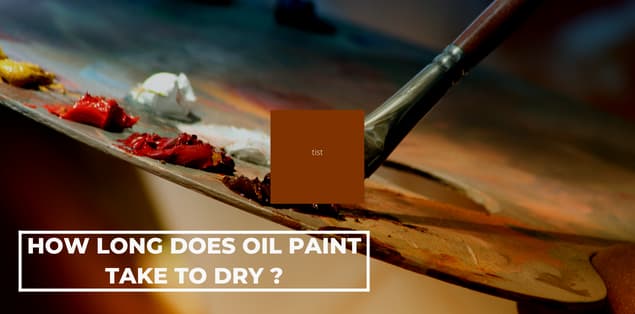So, how long does oil paint take to dry? Oil-based paints are known for taking an excessive amount of time to dry. This newly painted material takes significantly longer to dry compared to other types of paint like acrylics and watercolors. However, because of their basic constituents, these paints are more durable than their water-based equivalents.
Manufacturers use alkyd oil or a linseed oil-based natural oil to make oil-based paints. This article will talk about oil paint drying periods and how to make oil paint dry quicker. We will provide you with valuable information to remember while dealing with oil paints.
So, without further ado, let’s get down to the topic!
How Long Does It Take for Oil Paint to Dry?
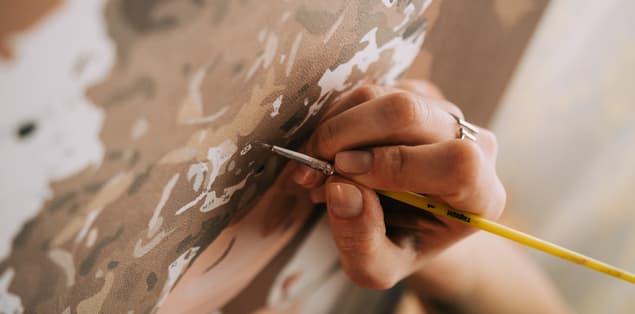
This is a difficult question to address clearly. Drying time for oil paintings may range anywhere from one day to many weeks or months. It can even take years. Drying time is affected by a variety of things. Some factors are beyond your ability to influence, while others, such as drying time, may be modified by adjustment. Among the elements that have an impact are:
- Temperature: The amount of time it takes to dry paint is slowed significantly by high humidity and chilly temperatures. A warm and dry climate creates the best circumstances for this procedure.
- Wind: Another factor that contributes to the ideal circumstances for drying.
- Manufacturer: Each oil paint manufacturer uses a unique blend of oils in its products. Because some of these oils dry more slowly than others, the total drying time might be affected.
- Age: Before being put up for sale, a paint tube may have been sitting in the shop for some time, destroying the seal. For example, suppose that the oxidation process has already begun. In this case, this causes the paint to dry more quickly on the canvas than if you had used a more recent paint.
- Color: It takes certain color pigments less time to dry than others, depending on the color.
- Thickness: The drying time is determined not only by the number of paint layers but also by the thickness of each layer.
How Long Does Oil Paint Take to Dry on Wood?
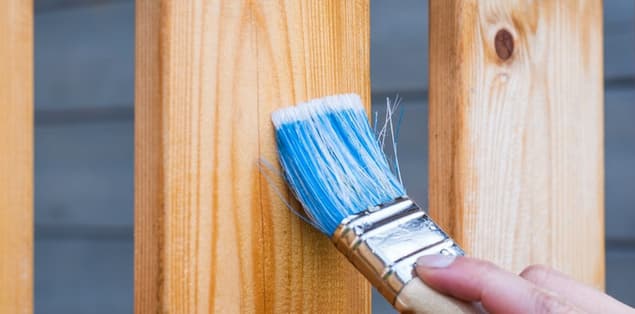
3-6 months.
Since they are hardwoods, oil paints on woodwork best when applied to birch and maple woods. Due to the stiff nature of the surface of hardwood, the paint will not break as it dries on the surface. Additionally, this material is thicker than canvas, allowing you to construct tinier paintings without difficulty.
It normally takes between three and six months, but it may take much longer depending on how thick the paint is. For example, when using oil paint, one must wait for the paint to dry, which occurs during the oxidation process and means that the oil must become more rigid.
How Long Does Linseed Oil Paint Take to Dry?
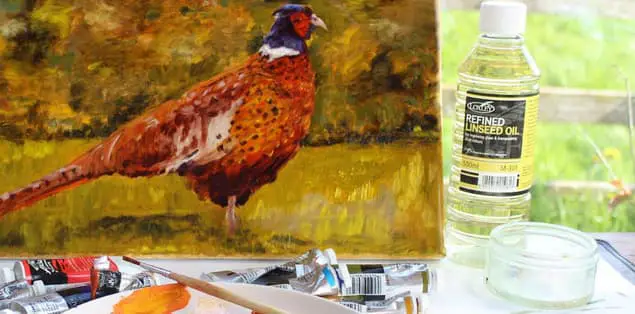
18-24 hours.
Linseed oil dries quicker than walnut oil, which, in turn, dries quicker than poppy oil. Poppy oil dries quicker than linseed oil. You may substantially speed up the drying period of your painting by using spike lavender oil manufactured from refined linseed oil. These paints are readily available at most businesses that sell art supplies. Drying time ranges between 18 and 24 hours.
How Long Does Oil-Based Floor Paint Take to Dry?
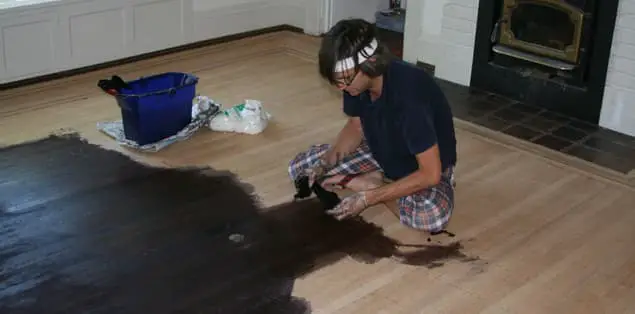
The amount of time it takes for the floor paint to dry will vary according to the kind of paint that you are using and the surface you are painting. The amount of time it takes for your floor paint to dry is of the utmost significance in the vast majority of instances. It may keep you from going on with other aspects of the painting and decorating job you are working on.
Suppose the oil paint takes an excessively long time to dry. In that case, it may also prevent you from applying several coats or other treatments as necessary.
Various elements and conditions determine your paint’s precise drying time. In addition to the kind of paint that you use, there are many additional considerations to take into account, such as:
- The kind of surface that you’re painting and what it looks like
- Temperature of the surface
- Total number of layers that you are building
- Ventilation present in the area
Every one of these variables has the potential to affect how long it will take for your paint to completely dry. As a result of this, there are many actions that you can do to speed up the drying period of the paint without negatively affecting the paint’s overall quality.
When using any paint based on an oil medium, you can generally anticipate the paint to dry within six to eight hours. Even though it may seem dry to the touch, you must wait at least twenty-four hours before adding a second layer. Paints made with oil can take quite some time to dry, but they have many advantages for the surface you apply them on.
In contrast, you can often touch dry latex paint in as little as an hour after applying it. In most cases, you may apply another coat of thick paint after it has slept for around four hours.
You can find the drying time manufacturers advise for most floor paints and treatments on the container they come in. Before applying any form of paint, make sure to familiarise yourself with the instructions provided by the manufacturer. For example, suppose that you have used the same paint in the past. In this case, verifying that you are applying the paint in the most efficient method before beginning a new project is also a best practice.
How to Make Oil Paint Dry Faster?
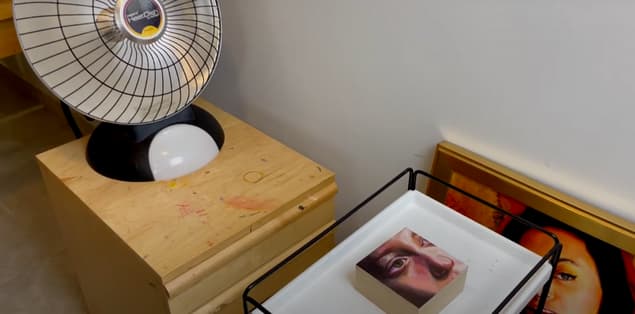
There are numerous ways how you can make oil paint dry faster. We have mentioned some of them below:
Paint in a Dry Place With Good Airflow
As already said, oil paint dries because of oxidation. It doesn’t dry like acrylic paint does when the water in the pigment evaporates. Oil paint, on the other hand, goes through a chemical reaction that makes the oil harden.
You may greatly speed up the drying process by painting in a dry, well-ventilated space. People also claim that spending time in the sun is beneficial. For example, a dehumidifier, a ventilation fan, and a window open (provided it isn’t humid outside) may all assist speed up the drying process. Keeping a steady stream of air flowing is beneficial to the chemical reaction.
Fan blades of rarely used fans should be dust-free before you turn them on. For ceiling fans, this is very important. Avoid letting airborne dust settle on your work.
Apply Heat To Your Paint
This one requires caution, but it does work, and it works well. Using heat to speed up the drying process might save you time. The more quickly it dries, the more heat it produces. When the air is colder, though, drying will take longer.
There are a variety of techniques to make your painting more vibrant. Placing it in a warm, sunny window is one approach to keep it safe. The heat and the light from the sun will both hasten the process. If you want it hot, set the thermostat in your studio to a higher temperature overnight or throughout the day.
In the summer, when we went to Plein air events, we’d hang a completed painting on linen nailed to plywood in the rear window of our vehicle. However, we learned the hard way that you must exercise extreme caution. Our car’s interior would sometimes get so hot that the linen began to peel away from the plywood, causing the plywood to distort. Remember that many painting panels include an adhesive that hardens when heat exposure.
Some believe that using a heat gun on an oil painting is a good idea. It’s said to work, but we’ve never tried it since we like to work wet on wet. Do not exceed 130 degrees Fahrenheit while using a heat gun. Heat may cause discoloration or cracks in the paint, so be cautious while using it. Move the pistol slowly over the artwork, keeping it a few inches away. During this operation, ensure the gun does not come into contact with the paintwork.
We’ve also attempted other heating methods, but we won’t tell you about them for fear of setting your home on fire. Just ensure you don’t overheat and keep safe if you use any heating technique. Waiting a few days for the paint to dry is preferable to not ruining your artwork or setting fire to your studio.
Apply The Oil Paint In Thin Layers
Now we’ll discuss techniques to get things done faster that have nothing to do with the environment. So the first step is to apply paint.
It takes longer for the paint to dry when it is thick. However, when you expose the oil paint to air, it undergoes oxidation, altering its chemical composition. This technique takes longer as you use more paint since not all the paint is exposed equally when the paint is thick.
There are a variety of techniques to thin oil paint. The most frequent method is to utilize solvents, but you may also use other types of oils, dryers, and thin paint. Keep in mind that using oil to thin your paint will cause it to take longer to dry, not less. Without using thinners, you may thin the paint by scraping it vigorously on the canvas with a bristle brush (AKA tube consistency).
The first coat of paint must include the least amount of oil when applied in thin layers. If you don’t want your painting to crack, “ghost,” or become worse, you must follow the “thick over thin” or “fat over lean” guideline.
As a rule of thumb, we use thinning solvents while layering paint to thin the first coat. You may add a little thicker layers using paint that remains in the tube, reserving the thickest for the last.
The advantage of this procedure is that the initial thin coat of paint will aid in the drying of subsequent layers. The initial layer takes the longest to dry most of the time.
After drying your canvas with a hot earth tone such as Transparent Red Oxide, you’re ready to begin painting with acrylics. Apply thin coats of paint and allow them to dry for one to two days, depending on the environment. Just remember that fat is preferable to lean, and thick is preferable to thin. You can dry it in hot or humid weather as well.
Final Words
You should know clearly how long an oil painting takes to dry before you can frame it after reading this article. Oil painting takes a long time to complete, but the results are well worth waiting for.
Pause until the paint is dry before applying the varnish and frame it. We truly hope you found the solutions to your queries to be useful. Now is the moment to gather your supplies and begin working on the oil portraits of your dreams.
This was a complete guide on how long oil paint takes to dry.
